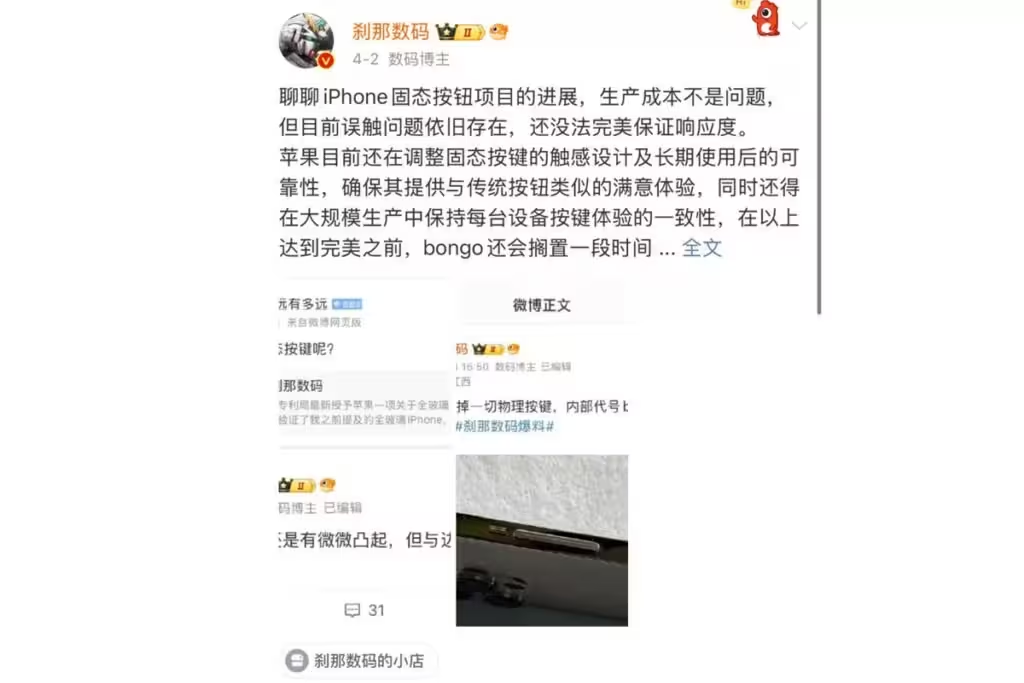3 Minutes
Apple Revisits Haptic Button Innovation for Its Flagship Devices
Recent reports indicate that Apple is reigniting its development of advanced haptic buttons, aiming to introduce this cutting-edge technology not just on the iPhone, but also across other core products like the iPad and Apple Watch. While many believed earlier rumors about solid-state buttons had faded, credible leaks suggest the tech giant is making significant progress and expanding its plans.
The 'Bongo' Project: Replacing Traditional Physical Buttons
According to information shared by a well-known Chinese source, "Instant Digital," Apple is actively working on an initiative codenamed "Bongo." The primary goal of this project is to replace traditional mechanical buttons with touch-sensitive, solid-state alternatives that have no moving parts. These haptic buttons would use Apple’s advanced Taptic Engine to simulate a realistic button press sensation, paving the way for smoother, more reliable device interactions.
Key Features and Advantages of Haptic Buttons
Unlike conventional mechanical buttons, which can wear out over time, haptic buttons offer numerous advantages for smartphones, tablets, and smartwatches. Their solid-state design ensures greater durability and fewer potential points of failure. By leveraging sophisticated vibration motors, haptic buttons can mimic the tactile feedback users expect, distinguish between different types of touches (such as light taps, firm presses, or long holds), and provide customizable control to enhance the user experience. This can lead to better water and dust resistance as well, since fewer moving parts mean fewer entry points.

Background: Delays and Renewed Focus in Apple's Haptic Journey
The idea of introducing solid-state buttons isn’t entirely new. Well-known analyst Ming-Chi Kuo previously reported that Apple had plans to debut haptic buttons on higher-end iPhone 15 models, but production challenges led to the project being paused. Chief among these obstacles were issues with touch sensitivity and accidental presses. However, sources now reveal that Apple has quietly revived the project, with ambitions that go beyond just the iPhone.
Market Relevance and Future Prospects
Integrating haptic buttons could further differentiate Apple’s hardware in a competitive market, offering enhanced durability and premium tactile experiences. The company’s prior work with touch and haptic technology in products like AirPods may provide valuable insights to overcome previous hurdles. Despite this renewed focus, industry insiders caution that haptic buttons are unlikely to appear in this year's iPhone 17 lineup. Instead, Apple may target the launch of these innovative controls for the iPhone 18 generation or later, once the technology meets the company’s high standards.
As Apple continues to push the envelope in user interface design, the arrival of haptic button technology across its device ecosystem would mark a substantial leap in how users interact with their favorite gadgets, reinforcing the company’s reputation for design innovation and reliability.



Comments